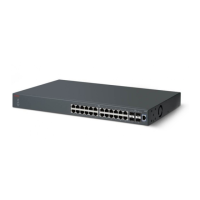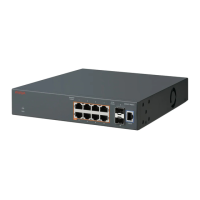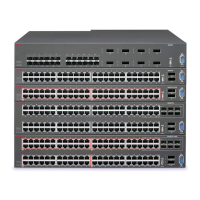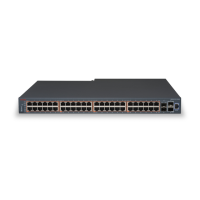Name Description
CurrentMgmtProtocol Indicates the current transport protocols that the
switch supports. This is a read-only item.
BootMode Specifies whether to use the BootP or DHCP server
to assign an IPv4 address for the management
VLAN at the next switch reboot. Values include:
• other: read only
• bootpDisabled: use configured server IP address
• bootpAlways: always use the BootP server
• bootpWhenNeeded: use the BootP server when
necessary
• bootpOrLastAddress: use the BootP server last
used
• dhcpAlways: always use the DHCP server
• dhcpWhenNeeded: use the DHCP server when
necessary
• dhcpOrLastAddress: use the DHCP server last
used
ImageLoadMode Indicates the source from which to load the agent
image at the next boot. This is a read-only items.
CurrentImageVersion Indicates the version number of the agent image that
is currently used on the switch. This is a read-only
item.
LocalStorageImageVersion Indicates the version number of the agent image that
is stored in flash memory on the switch. This is a
read-only item.
NextBootDefaultGateway Indicates the IP address of the default gateway for
the agent to use after the next time you boot the
switch. This is a read-only item.
CurrentDefaultGateway Indicates the address of the default gateway that is
currently in use. This is a read-only item.
NextBootLoadProtocol Indicates the transport protocol that the agent uses
to load the configuration information and the image
at the next boot. This is a read-only item.
LastLoadProtocol Indicates the transport protocol last used to load the
image and configuration information about the
switch. This is a read-only item.
Configuring the Asset ID using EDM
Use this procedure to configure the Asset ID for a switch or stack.
Configuring the switch using EDM
126 Getting Started with Avaya ERS 3500 Series July 2015
Comments on this document? infodev@avaya.com

